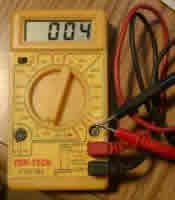 username@email.com
username@email.com
In this lesson we will discuss procedures for lab safety, relate technology to science, and identify the common tools of scientific investigation.
With the emphasis on hands-on learning and inquiry in today’s educational arena, it is important to know basic lab safety and to convey this to your students. Labs, chemicals, and equipment can be dangerous if misused. Always follow the instructions for the experiment. Pay close attention to the safety notes. Chemicals–even water–can cause harm. The trick is to know how to use chemicals correctly so that they will not cause harm.
Generally your school will have safety guidelines already set for you to follow, however you will have to know how to apply these guidelines. Always be sure to learn your school’s safety procedures, locations of fire safety equipment, and Material Safety Data Sheets (MSDS). Be sure to follow Occupational Safety & Health Administration (OSHA) guidelines for equipment/chemical use and storage. Every lab will contain different chemicals. Get to know your inventory and how to appropriately utilize what is there.
One way to promote student and parent/guardian understanding of lab safety and guidelines is to have them sign a safety contract. Instituting protocols for broken guidelines and conveying this to your students is another way to help create a safe lab environment. Preventing an accident is the best way to have a safe classroom laboratory.
Different tools are used for many different experiments in a science laboratory. Some of these tools include, but are not limited to: beam balances, assorted glassware such as beakers, flasks, etc., pH meters, multimeters, spectrometers, gas burners, hot plates, chemicals, scoopulas, forceps, burets, and much much more. Each piece of equipment has a specific function. Beam balances are used for measuring amounts of a substance by mass. Glassware is used to measure, contain and heat or cool chemicals/substances. Gas burners and hot plates are utilized to heat chemicals or substances. Scoopulas and forceps are for picking up chemicals or equipment. Meters are used to take precise readings during conducted experiments. These meters help to advance our study of science and bring a greater use of technology to the classroom.
The most common types of meters utilized in the classroom laboratory are pH meters, multimeters, and spectrometers.
A pH meter is an electronic instrument used to measure the pH of a substance. Generally pH meters have a glass probe connected to a meter that reads the pH. Each pH meter is unique and should be accompanied by instructions for use.

pH meter
Multimeters are electronic measuring instruments that combine several functions in one unit. The most basic instrument includes an ammeter, voltmeter, and ohmmeter.

Multimeter
A spectrometer is an optical instrument used to measure properties of light over a specific portion of the electromagnetic spectrum.